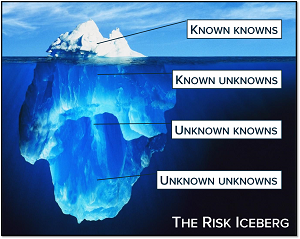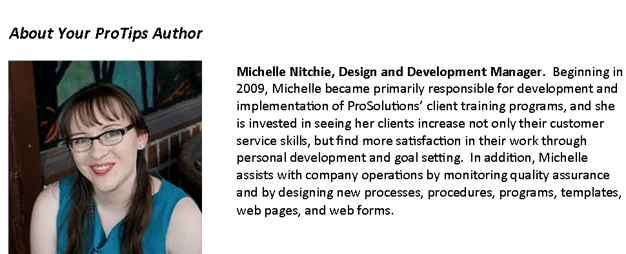 Law Number XLV: One should expect that the expected can be prevented, but the unexpected should have been expected.
Law Number XLV: One should expect that the expected can be prevented, but the unexpected should have been expected.
-Norman Ralph Augustine, Augustine's Laws
There are tons of aphorisms surrounding this topic: "expect the unexpected" is a particularly common one. Or if you've come in contact with any of NASA's safety discussions (or heard it from Donald Rumsfeld), you know about the "unknown unknowns." What this all boils down to is that risk presents itself to us in the form of what we know versus what we don't, what we expect and what we don't.
There's more to the story, however. In fact, there are four types of risk:
- Known knowns. These are the things we know about and understand (at least to some level). For example, this could be our direct competitors, whom we can follow and research to understand what they may be doing within the industry.
- Known unknowns. These are the things we can name as potential risks, but don't yet understand. For example, this could be new competitors who may rise up within the industry. Or it could be the difficulties we would incur if a key manager were to leave the company or take a hiatus at an unexpected moment.
- Unknown knowns. These are things for which we have all the information necessary, but we haven't put the pieces together to take any action on them. For example, we may have data and experience telling us that a particular product is failing, but no one has realized that something needs to be done about it yet.
- Unknown unknowns. Potentially the most dangerous, these are the completely unexpected and unanticipated things that can occur that "pull the rug out from under us" when they occur. These may be everything from natural disasters to a sea change within the industry, such as the rise of online over print news.
Thinking about these different types of risk helps us to plan for how to react to them. Take a moment now to begin to brainstorm what risks you can envision and place them into their potential categories.


